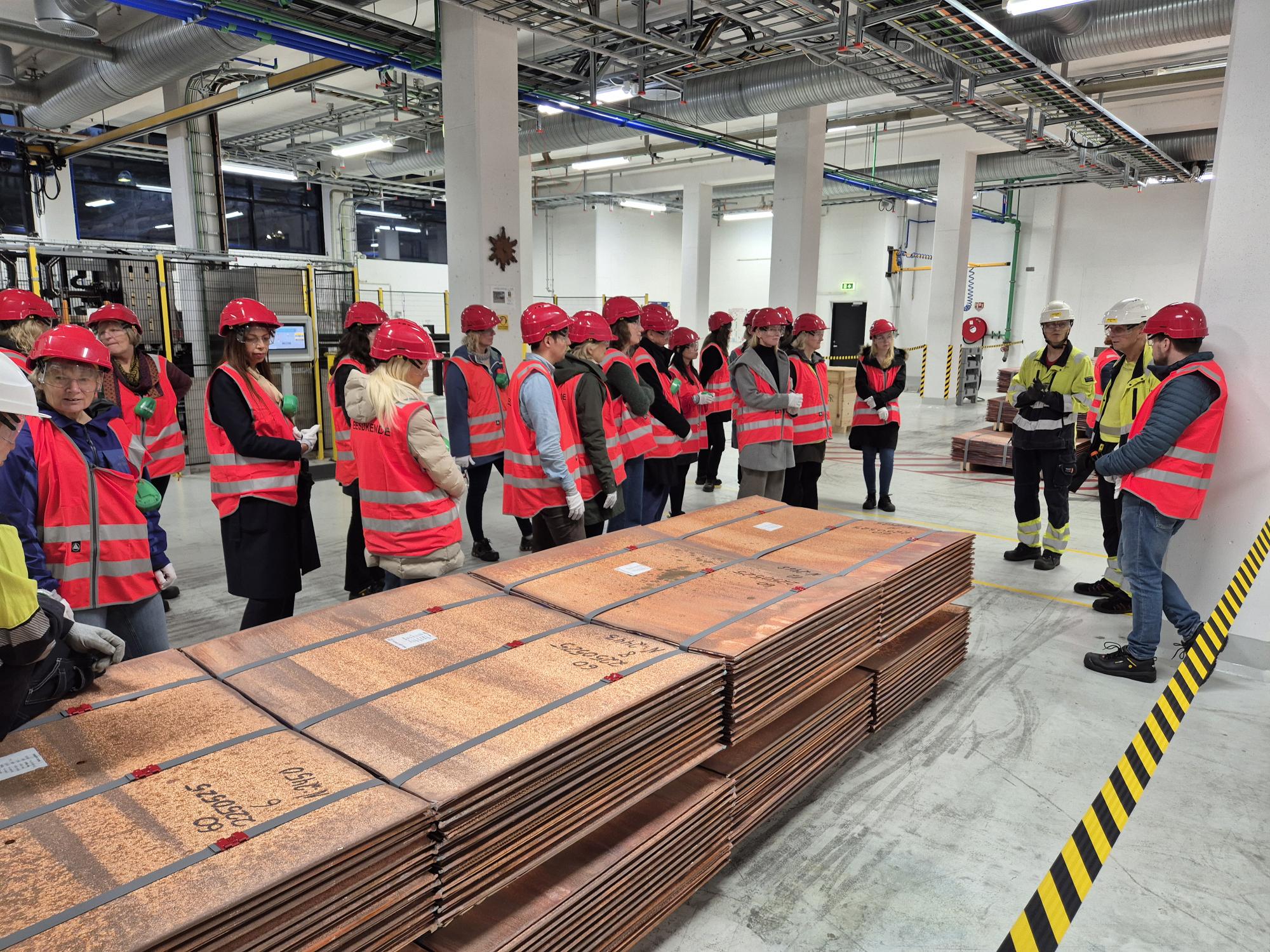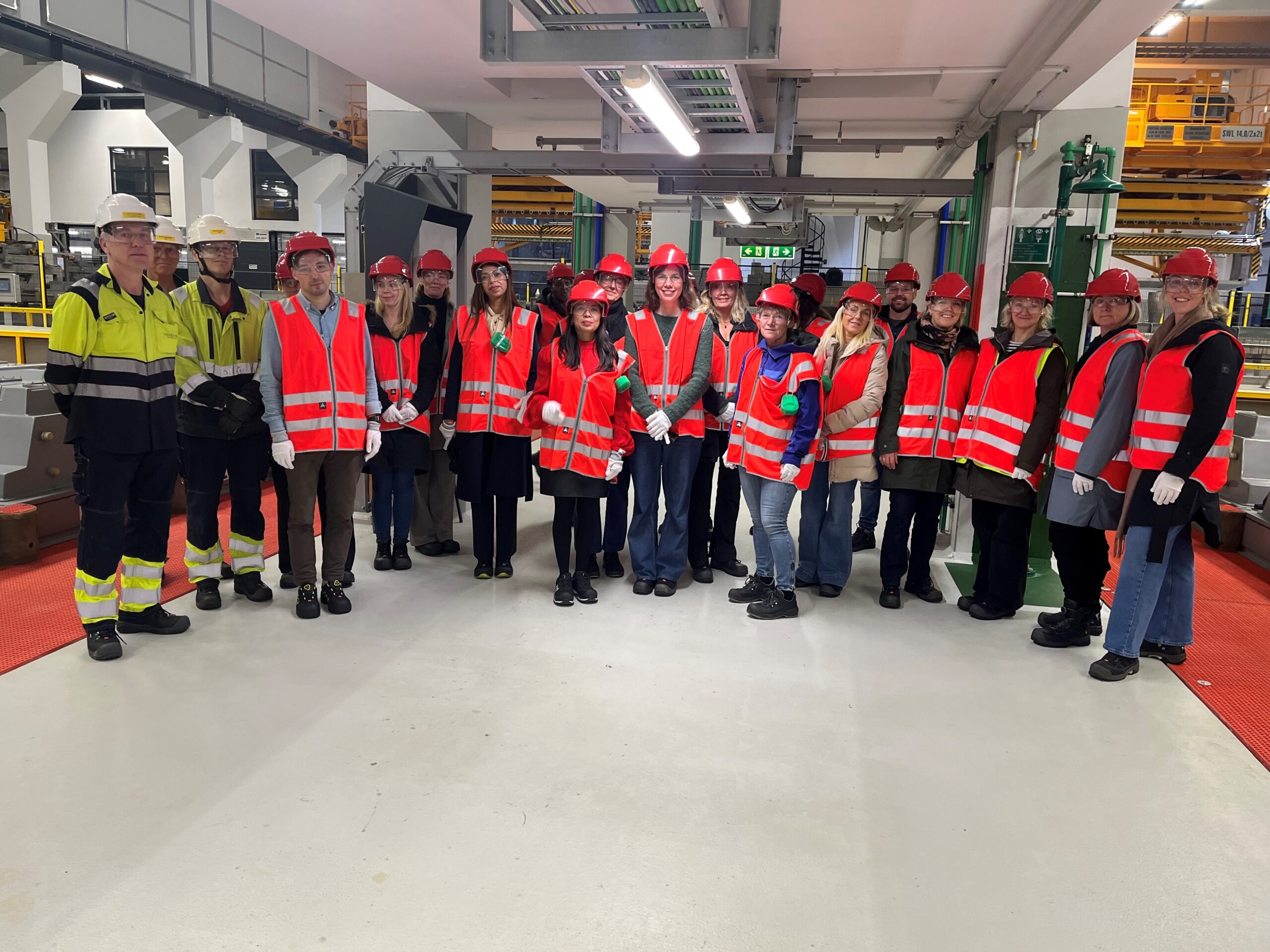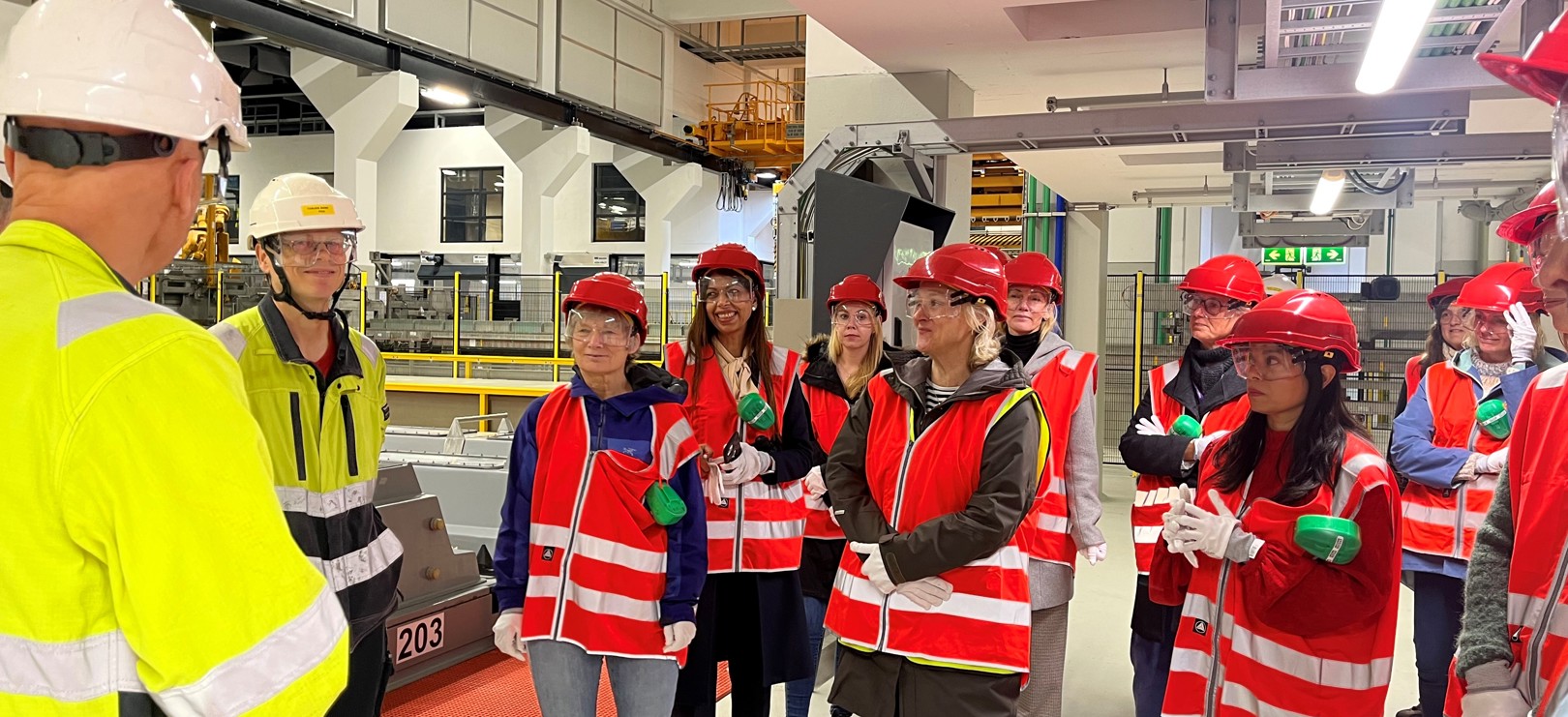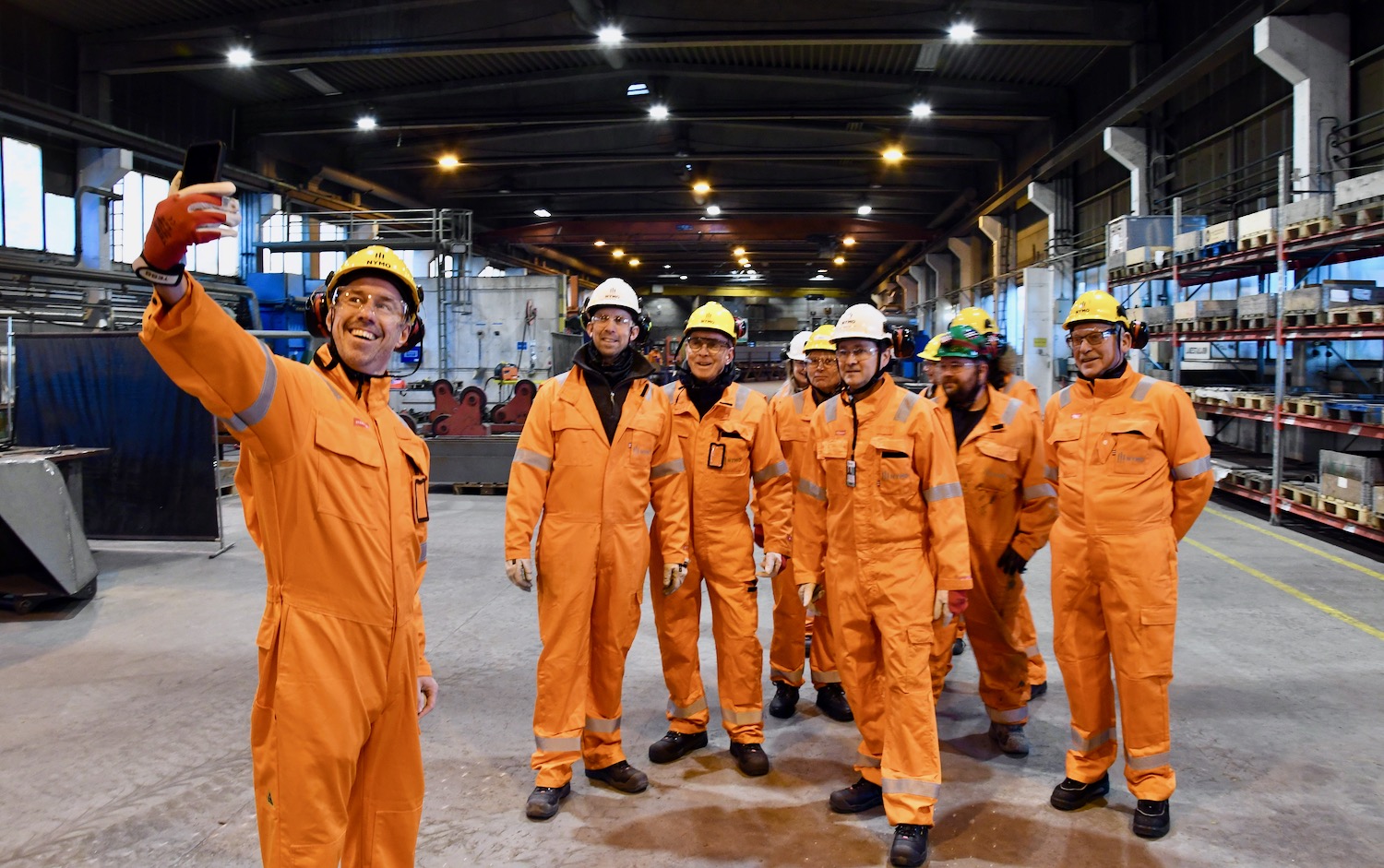The plant in Kristiansand is considered the most advanced in the world.
During the visit organized by NODE Eyde Women (NEW), the group learned about the impressive technology behind the facility. The new electrolysis plant has reduced power consumption by as much as 35%, while dramatically improving its environmental profile. Whereas the old plant had annual emissions of 2-4 tons of copper, emissions have now been reduced to only 30-50 kilos of copper per year. This is a huge step toward more sustainable metal production.
One of the most expensive components in the plant is the anodes, which alone accounted for 10% of the investment costs. The main reason is the use of iridium, an extremely costly metal. The price of iridium has seen a dramatic increase in recent years – from USD 500 per ounce (about 30 grams) when planning began, to USD 1,500 during project design, and now as high as USD 4,500 today. This price surge is partly due to increased demand for hydrogen production facilities. Producers are working hard to find alternatives to iridium or ways to reduce its content.

The project would not have been possible without support from Enova, which was crucial for its realization. The facility also boasts world records: the electrolysis tanks are the longest in the world, and all are equipped with lids to eliminate gases, odors, and corrosive elements. The result is a production environment that is both clean and safe.
The hosts from Glencore included Ernst Rosseland, Torjus Åkre, Geir Gulliksen, and Elke Thisted, who shared their knowledge and experience with the participants. The visit provided valuable insight into how advanced technology and sustainable solutions go hand in hand in modern industry.




